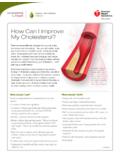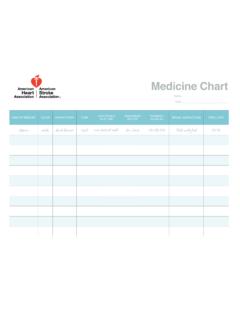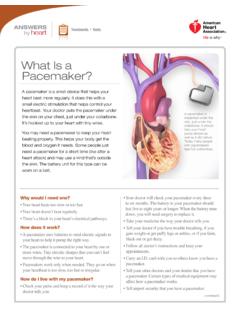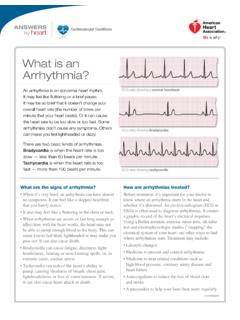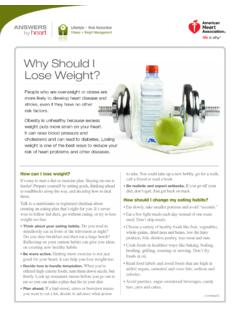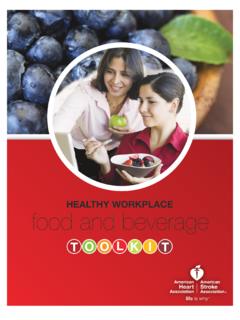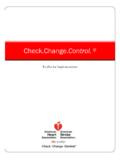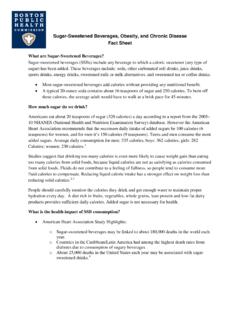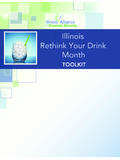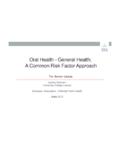Transcription of POLICY STATEMENT - heart.org
1 POLICY STATEMENT MARCH 2017 Farm Bill POLICY and the Supplemental Nutrition Assistance Program (SNAP)BackgroundFor more than 50 years, the Supplemental Nutrition Assistance Program (SNAP formerly Food Stamps) has been vital in addressing food insecurity and nutrition in the United States. It has an impact on health, educational attainment and economic The program helps more than 45 million Americans struggling through underemployment and low or stagnant wages. The majority of benefits go to households with children, older adults or those with Recently, SNAP participation has dropped, declining in 40 states and the District of This is the lowest SNAP participation rate since 2010.
2 It s likely due to the slowly improving economy reducing financial need among some households, but also the strict time limits established by Congress that have led to some jobless adults losing SNAP and Food InsecurityFood insecurity and poor nutrition remain problems for millions of American house holds. Research shows that SNAP benefits are often not adequate to last a family the entire ,5 A 2016 report3 summarized the important role SNAP plays in addressing food insecurity. Importantly, the majority of SNAP recipients who are eligible for work do so while on the program, underscoring that many recipients are using the program to overcome underemployment or temporary job recent House of Representatives Committee on Agriculture report7 affirmed the importance of SNAP, but proposed areas of improvement.
3 These included innovation and flexibility in program delivery, work requirements and SNAP employment and training programs, maintaining program integrity, and improving food access and promoting healthy American Heart Association will focus on diet quality in the forthcoming reauthorization of the Farm Bill, with the goal of ensuring that low-income Americans have access to healthy foods and beverages. We can all agree that no one ought to go hungry in America, and SNAP is essential in protecting the most vulnerable citizens during tough times. For many it is a vital lifeline to keeping food on the table Chairman K.
4 Michael ConawayKey Findings from the 2016 White House Report on SNAP Nearly one in seven American households experience food insecurity, lacking the resources for consistent and dependable access to food. The SNAP program benefits more than 15 million children who are in one of every two households receiving benefits. SNAP benefits support vulnerable populations including children, people with disabilities and older Americans, as well as an increasing number of low-income working families. SNAP plays an important role in reducing poverty and food insecurity. SNAP benefits lifted at least million people out of poverty in 2014, including million children.
5 SNAP s positive effects extend across the lifespan. SNAP benefits for expectant mothers can reduce the incidence of low birth-weight babies between five and 23 percent. Receiving SNAP benefits as a child can increase likelihood of completing high school by up to 18 percent. SNAP benefits can also lead to overall health and economic self-sufficiency among women. Although essential in addressing food insecurity and nutrition, current SNAP benefit levels are not sufficient to sustain many families through the end of the month. More than half of SNAP households report experiencing food insecurity.
6 Research has shown that exhaustion of SNAP benefits by the end of the month can also decrease test scores and increase disciplinary events among school-aged children. Insufficiency of benefits can cause serious health problems related to diabetes and can lead to costly and avoidable BILL POLICY AND THE SUPPLEMENTAL NUTRITION ASSISTANCE PROGRAM (SNAP)american heart association POLICY statementSNAP and Healthy Food Access Although diet quality has been steadily improving in the during the past two decades, overall dietary quality is still poor. Most significantly, there is a widening gap associated with education and Despite the important role SNAP plays in addressing hunger, additional data indicate that SNAP recipients have worse diet quality than income-eligible ,10,11,12 Although diet quality for low-income consumers tends to be poor overall, one study found that SNAP beneficiaries consumed 39 percent fewer whole grains, 46 percent more red meat, and, in women.
7 61 percent more sugar-sweetened beverages compared with Another study found that sugar-sweetened beverages accounted for 58 percent of refreshment beverages purchased by SNAP households, and SNAP benefits paid for 72 percent of the sugary drinks purchased by SNAP In both SNAP and SNAP-eligible households, more money is spent on sugar-sweetened beverages (SSBs) than any other food commodity and SNAP households spend somewhat more on SSBs than non-SNAP Unlike other federal feeding programs like the Women, Infants, and Children Program (WIC) or the Child and Adult Care Food Program (CACFP), which have nutrition standards for foods and beverages that can be served or purchased, the SNAP program does not focus on diet quality.
8 Work participation for households that received SNAP in a typical monthCenter on Budget and POLICY Priorities I : CBPP Calculations based on 2004 SIPP Panel in monthof SNAP receiptEmployed during previousor following year58%62%82%87%All SNAP households Families with childrenSNAP Households with Working AgeNon-Disabled Adults Have High Work RatesCenter on Budget and POLICY the , the gap in the quality of diets has widened between the haves and the Diet Quality GapDiet Quality by Socioeconomic Status423732 1999-2000 Diet quality scores do not include trans fat Healthy Eating Index 2010A diet quality metric based on food and nutrients that have established relationships to health outcomes and major chronic than 12 years of education and poverty income ratio than 12 years of education and poverty income ratio < Geographic Staff.
9 Source: Dong D. Wang, et al., Harvard University School of Public Health. BILL POLICY AND THE SUPPLEMENTAL NUTRITION ASSISTANCE PROGRAM (SNAP)american heart association POLICY statementSNAP consumers can buy almost any food or beverage with their benefits. And who bears the economic cost of poor diet quality? Tax payers are footing the bill for unhealthy foods and beverages and bearing the associated subsequent health care costs that are a result of diet-related chronic disease. Lower job productivity, absenteeism and diminished military readiness are also consequences. There is increasing public support for amending SNAP to add nutrition criteria to use government dollars toward healthful items to improve the health status of those with the greatest health ,17 Research has demonstrated that increasing the amount SNAP participants can spend on food does improve diet quality, correlating with increased purchase of fruits and vegetables, whole grains and experts have urged the Department of Agriculture (USDA) to pilot SNAP purchasing restrictions to support a healthier dietary pattern.
10 Some states and large municipalities have applied for waivers to disallow sugary drinks or foods with little or no nutritional value. Until this time, the USDA has rejected these applications saying this differentiation would be too difficult to implement in retail environments. Now there is indication that the USDA would be more responsive to applications from certain states that included both an incentive for healthy food purchases combined with restricting certain unhealthy foods or beverages. And the Healthy Incentives Pilot Program (as described below) and other initiatives have demonstrated that it is very feasible to implement incentives and restrictions within the Some research has estimated that banning sugary drink purchases using SNAP benefits could avert 510,000 diabetes person-years and 52,000 deaths from heart attacks and strokes over the next decade, with a cost-savings of $2,900 per quality-adjusted life years (QALY)
